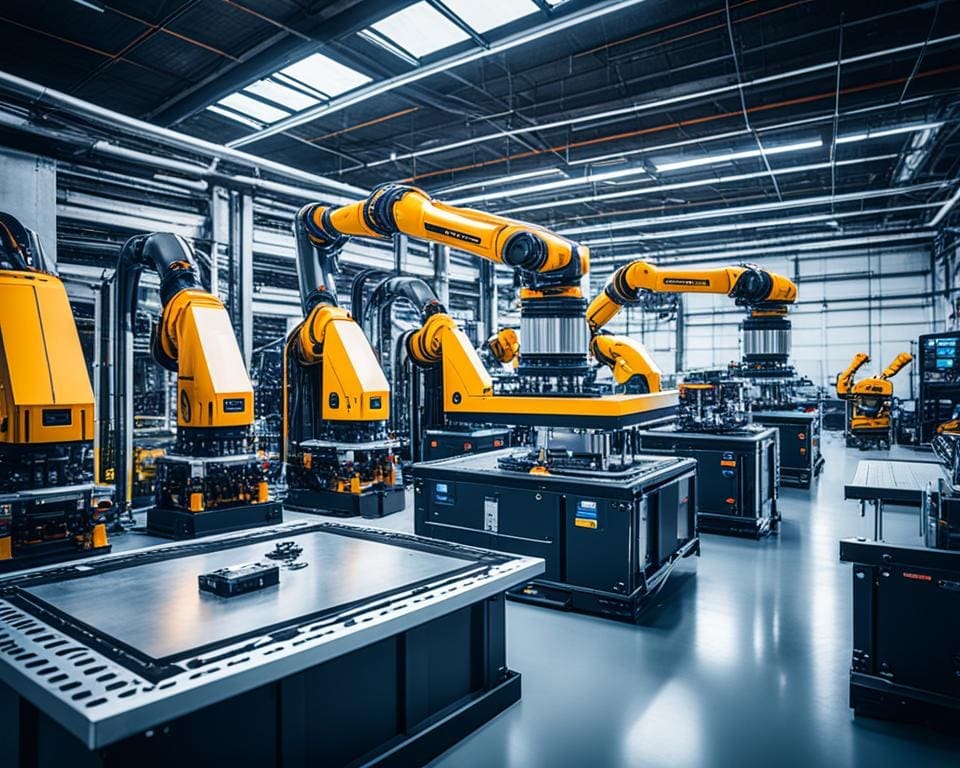In today’s quickly changing industrial world, it is crucial to grasp how AI boosts predictive maintenance for business excellence. AI predictive maintenance uses smart machine learning to analyze past and present data. This gives key details on the health of machines. By acting early, it cuts down on sudden stops, saving costs and raising efficiency.
Many sectors like manufacturing, transport, and energy are embracing these techs. The advantages of AI in predictive maintenance are clear. Businesses can make equipment last longer and cut down on maintenance spending. They can also plan maintenance better. AI tools detect unusual patterns and vibrations, spotting problems early. Thus, they prevent bigger issues from happening.
The Importance of AI in Predictive Maintenance
Introducing artificial intelligence into predictive maintenance marks a huge change for industries. It uses data to spot possible breakdowns before they happen. This cuts downtime and saves money. It is vital for companies to understand AI to make their maintenance better.
Defining Predictive Maintenance
Predictive maintenance looks ahead using data to guess when machines might stop working. Old methods wait for things to break or follow a fixed plan. AI changes this by checking lots of data, leading to smarter upkeep and longer-lasting equipment.
How AI Transforms Maintenance Operations
AI improves how factories make decisions, using live and past data to prevent problems. This means fixing things only when needed. With new tech like the IIoT, collecting and using more data makes operations smarter.

AI tools also make equipment more effective. They find ways to get better results and stop small problems from getting worse. This saves money, increases safety, and keeps machines running longer.
Understanding the Role of AI in Predictive Maintenance
Technology has grown, and AI-driven predictive maintenance has changed the way we maintain things. It uses strong data collection and smart machine learning algorithms. These help make businesses run better and move from preventive to predictive maintenance. They give insights we didn’t have before.
Key Components of AI-Driven Predictive Maintenance
AI-driven predictive maintenance needs both accurate data and advanced analytics. It’s vital for AI to have ongoing access to past and current data. This helps AI assess how machines are doing. This approach lets companies know before something breaks, guiding them on what to fix next. This way, they can avoid downtime.
AI Technologies Used in Predictive Maintenance
In predictive maintenance, different AI technologies are key. They use machine learning to look at lots of data from sensors and the Internet of Things (IoT). These tools can spot problems and diagnose issues as they happen. AI in maintenance serves many purposes, like predicting when something will fail and monitoring conditions. This keeps equipment reliable and working well.
Benefits of AI in Enhancing Predictive Maintenance Efficiency
Using AI in predictive maintenance brings many advantages for businesses. It reduces equipment downtime by 30-50%. This not only saves time but also increases the lifespan of machinery by 20-40%. Thus, assets remain useful for a longer time.
AI in maintenance shifts the focus to proactive actions. For instance, applying real-time data lets teams fix issues before they turn into big problems. This approach cuts down on repair costs. It also keeps production quality high by ensuring machines work perfectly.
AI also provides insights that help with inventory and forecasting part replacements. This reduces money tied up in spare parts. Adopting AI for maintenance saves costs and boosts reliability. It promotes a sustainable way of managing assets, offering long-term benefits.









